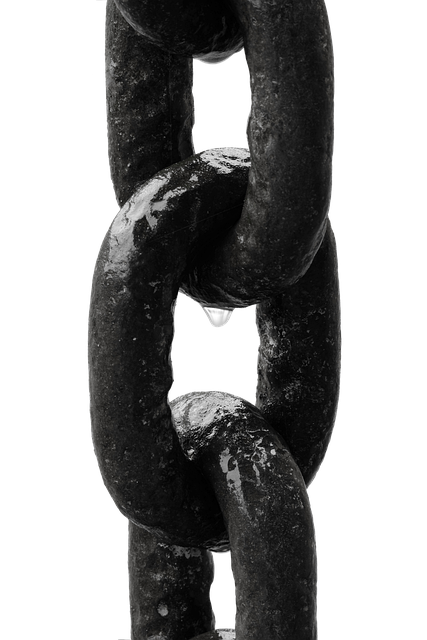Strategic internal linking boosts SEO and user experience by linking relevant pages, using descriptive anchor text, and considering user intent. Tools like Ahrefs and SEMrush aid in keyword research, content identification, and link performance analysis. Measuring CTRs, engagement, and time spent optimizes the strategy, guiding revisions and data-driven decisions for enhanced SEO performance.
Unleash your website’s full potential with effective internal linking strategies. In this comprehensive guide, we’ll show you how to craft relevant internal links that boost SEO and enhance user experience. From optimizing keyword research to utilizing powerful tools, you’ll learn the ins and outs of smart linking. Discover best practices for structure, measurement, and analysis to ensure your website navigates with ease while attracting more visitors. Learn how to use smart internal links to drive success in today’s digital landscape.
- Unlocking SEO Potential: Smart Link Strategies
- Crafting Relevant Internal Links
- Optimizing for User Experience
- Keyword Research for Internal Links
- Tools to Enhance Your Approach
- Measuring and Analyzing Success
Unlocking SEO Potential: Smart Link Strategies

Unlocking SEO Potential: Smart Link Strategies
To harness the full power of your website’s content, how to use smart internal links is a crucial skill for any digital marketer. By implementing strategic and intelligent internal linking, you can significantly boost your site’s SEO performance. Smart internal links optimization involves carefully selecting relevant pages to link between, ensuring a seamless user experience while providing valuable context to search engines. This method not only enhances navigation but also allows you to pass on authority and distribute page rank efficiently across your website.
When planning a smart internal links strategy, consider the topic relevance and user intent. Linking related content together creates a natural flow that encourages users to explore more of your site. Additionally, using anchor text effectively can provide subtle cues to search engines about the context and importance of each link, contributing to better crawlability and indexing. Incorporating these smart internal links tips into your content strategy will not only enhance your website’s architecture but also drive organic traffic and improve overall search engine rankings.
Crafting Relevant Internal Links

Creating effective internal links involves a strategic approach that goes beyond simply linking pages together. To harness the full potential of smart internal links, start by aligning link placement with user intent and page relevance. For instance, if you’re discussing “SEO best practices,” link to other articles within your site that delve into specific aspects like keyword optimization or on-page SEO. This not only enhances user experience but also signals search engines about the thematic connections between pages.
When implementing a smart internal links strategy, consider using anchor text that is both descriptive and contextually relevant. Instead of generic phrases like “click here,” use keywords that accurately represent the content of the linked page. For example, “Learn More About Smart Internal Links SEO” provides clear indication to users and search engines alike about what they can expect to find by clicking through. Incorporating these tips into your link-building strategy can contribute to better site navigation, improved user engagement, and stronger SEO performance.
Optimizing for User Experience

Creating a seamless user experience is paramount when implementing smart internal links within your website’s structure. These links are designed to guide users through your content, ensuring they can navigate with ease and find relevant information quickly. To achieve this, focus on intuitive link placement and a logical site architecture. Organize your pages in a hierarchical manner, making related content easily discoverable by placing smart internal links strategically within the text. This optimization technique not only enhances usability but also improves overall website performance.
When employing smart internal links tips, consider user behavior and intent. Link to resources that users are most likely to consult or share. For instance, if you have a blog post on SEO best practices, link to older articles or relevant guides within the text to provide additional context. A smart internal links tutorial suggests analyzing your site’s analytics to identify high-performing content and pages with high bounce rates. By understanding user behavior, you can optimize your internal linking strategy, encouraging users to explore more of your website and ultimately boosting engagement and conversion rates.
Keyword Research for Internal Links

Internal linking is a powerful strategy to enhance user experience and improve your site’s SEO. When crafting effective internal links, keyword research plays a pivotal role in guiding users and search engines alike. The process involves understanding your audience’s intent and identifying relevant keywords that naturally flow within your content.
By conducting thorough keyword research, you can uncover valuable insights into how users interact with your website. Tools like Google Keyword Planner or SEMrush can assist in finding related keywords, analyzing competition, and estimating search volumes. This information empowers you to create smart internal links by using these keywords strategically in anchor text, ensuring both relevance and user-friendliness. A smart internal links tutorial or tips can help optimize this process, making your site’s navigation more efficient and search engine friendly.
Tools to Enhance Your Approach

To enhance your approach with smart internal links, consider leveraging dedicated SEO tools designed to streamline and optimize this process. These tools offer a variety of functionalities, from identifying relevant content for linking to analyzing link performance. For instance, plugins like Ahrefs or SEMrush provide insights into keyword rankings and backlink profiles, helping you create a strategic smart internal links strategy.
Utilizing these platforms, you can discover high-quality pages within your site to interlink, ensuring both user experience and SEO benefits. Smart internal links tips include using anchor text that reflects the target page’s content, keeping link density balanced, and focusing on contextual linking. By integrating these practices into your smart internal links SEO strategy, you can improve site navigation, enhance content discoverability, and ultimately boost search engine rankings.
Measuring and Analyzing Success

Measuring and analyzing the success of your internal linking strategy is a crucial step in understanding how to use smart internal links effectively. By implementing robust analytics tools, you can track key metrics like click-through rates (CTRs), user engagement, and time spent on pages linked internally. These insights help identify high-performing content and areas for improvement. A smart internal links tutorial or optimization guide can provide specific tips on interpreting these metrics and making data-driven decisions.
For instance, a smart internal links tip might involve prioritizing low-performing pages for revision, ensuring relevant and contextual anchor text, and optimizing link placement within content to enhance user experience and search engine understanding. Regular analysis allows you to fine-tune your strategy, improve overall site architecture, and ultimately, boost SEO performance.
